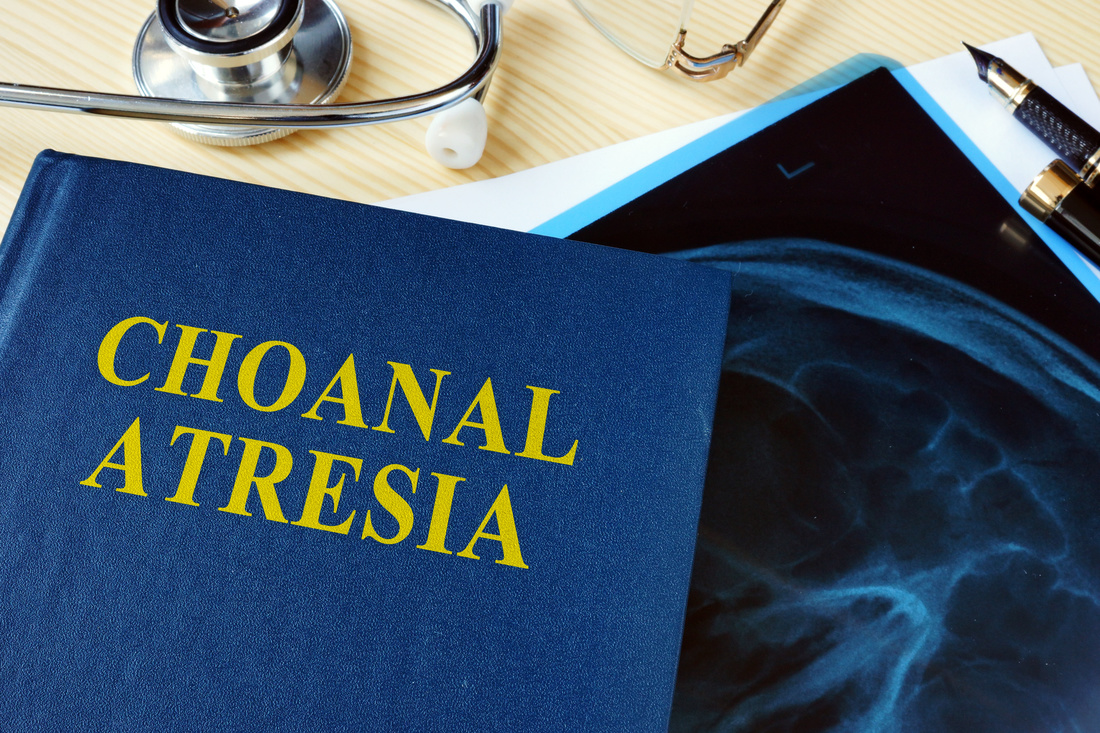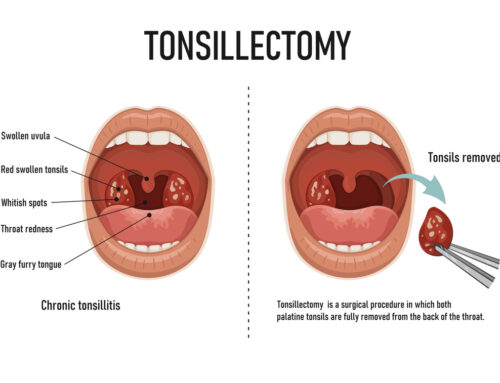Babies born with breathing difficulties are sometimes diagnosed with a birth defect known as choanal atresia, which will be an anxious and distressing time for parents and the wider family. So, what exactly is choanal atresia?
The basic explanation is that it involves a blockage in the opening at the back of the infant’s nasal passage (which is called the choana). This can be bone or bone and tissue, which hinders the passage of air into the baby’s respiratory system.
It affects around 1 out of every 7,000 babies (or 10,000 according to some reports). It’s slightly more common in girls than boys, and can sometimes be one of several genetic issues the child experiences.
We will explore this rare genetic issue and its causes below. This article will also explain the two types of this condition, how it is diagnosed, the signs and symptoms of choanal atresia and ways in which it can be treated.
Types of choanal atresia
There are two categories of choanal atresia that basically describe whether it is affecting one side of the nasal passage (left or right) or both sides of the choanal.
Bilateral choanal atresia – a complete blockage – is a serious health risk for a newborn, as initially babies primarily breathe through their nose. This is the rarest form of this medical condition.
Unilateral choanal atresia is more common. The blockage is on one side only (usually the right). This can make it harder to diagnose as the baby will be taking some air through the unaffected side.
With either of these, the blockage could be both bone and tissue, or less frequently it is choanal atresia solely due to additional bone.
Diagnosing choanal atresia
As bilateral choanal atresia seriously limits the baby’s ability to breathe, it is immediately apparent. Some infants can only receive sufficient oxygen when they cry – a process that opens the airways in their mouth.
Initial signs can also involve the baby struggling to feed, and choking. This is because as they try to take in milk, it worsens their limited respiratory abilities.
Poor ability to take in oxygen can also cause the infant to go blue as they feed or sleep. Bilateral choanal atresia is, therefore, an issue that demands prompt medical intervention.
As mentioned, if the condition affects only one side, it is harder to spot, as the baby can breathe, feed and sleep relatively normally for the first few weeks, or even months! In some cases, a diagnosis of unilateral choanal atresia is only made when the child is much older.
Signs and symptoms of unilateral choanal atresia include:
• Witnessing and hearing a child breathing through their mouth more than normal
• Excessive nasal discharge.
Testing a baby or child for this condition involves the doctor inserting a thin medical tube into the nose. If this can’t travel to the pharynx (the area of the throat behind the nose) then it indicates the presence of a blockage. MRI scans and CT scans can also be used to confirm choanal atresia and the extent of its impact.
When a doctor identifies either type of choanal atresia in a child, it is standard practice for them to also check for further genetic issues affecting their health.
What causes choanal atresia?
There is no clear cause for either form of choanal atresia. It is known as a genetic disorder – meaning it happens pre-birth – and both genes and environmental factors may be involved.
In the womb, a baby grows and develops in a complex series of stages. In rare cases, their nasal passages fail to fully open or connect. These same babies can also have other birth defects linked to bone formation and sensory impairment. There are cases where babies born with choanal atresia also have incomplete development of their genitalia (Genital Hypoplasia).
Treatments for choanal atresia
Following a diagnosis of choanal atresia, the next step would often be to schedule an operation under general anaesthetic, conducted by an ENT (Ear, Nose and Throat) surgeon.
Is there an alternative way of treating choanal atresia?
There isn’t when it affects both sides of the nasal passage. A newborn baby with bilateral choanal atresia will have a serious respiratory problem. They will need help to get sufficient oxygen until the surgery to remove the blockage.
However, in cases of unilateral choanal atresia, it may be possible to avoid or delay surgery, and to monitor the child’s breathing capacity as they grow. Having one side of their nasal passage and their mouth to rely on can compensate for the blockage.
Fortunately, when surgery is needed, most blockages can be removed by passing instruments down the baby’s nose, in a procedure called an endoscopy. However, there are times when it’s necessary to create an incision in the roof of the child’s mouth, to reach the nasal passage effectively.
Post surgery for choanal atresia
The operation to treat this condition often involves the placement of nasal stents. These are special tubes that ensure the newly opened nasal passages remain clear during the initial recovery phase. Parents are taught how to suction them, to help the baby breathe easily.
A follow-up procedure a few weeks later will remove these stents, as by then the area should have fully healed. Occasionally, stents can be reinserted to compensate when the nasal passage starts to narrow again.
The prognosis is then excellent, with most patients having full use of their nose to aid healthy breathing.
Your ENT team will give you a lot of information on how to monitor your child’s breathing and the steps you need to take if you become concerned, either pre or post choanal atresia treatment.






